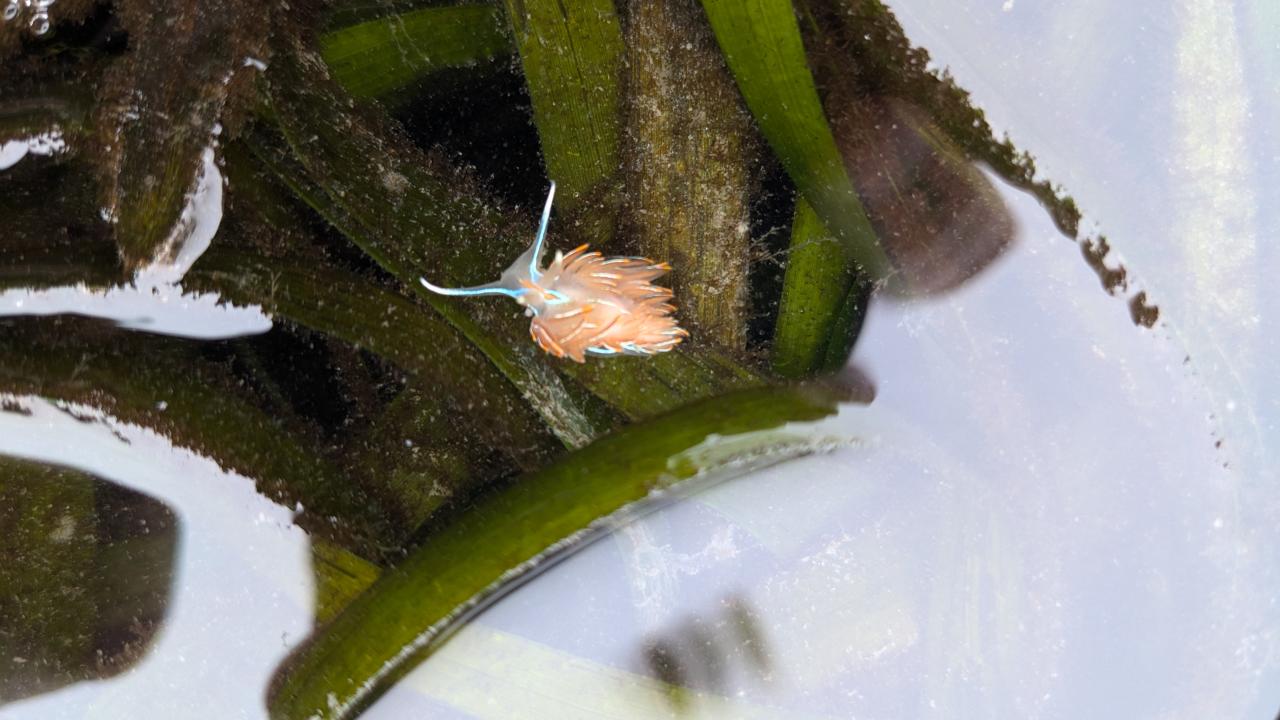
Eelgrass Buffet: Experiencing Eelgrass Research at the BML
An SRJC-BML Internship Story
Miles Johnson is a third-year student at SRJC studying biology and mathematics. They plan to transfer to UC Davis and pursue research in ecology.

This summer, I had the incredible opportunity to work with Emma Deen, a junior specialist in the Stachowitz lab at the Bodega Marine Laboratory, where I delved into the fascinating world of marine science and research. During my internship, I was involved in various activities providing valuable hands-on experience. As a first-generation college student, this experience was key in understanding what academic research is really like and how labs operate day-to-day. It has not just boosted my passion for research but also helped me get a clearer picture of my future in academia.
During my internship I spent a lot of my time keeping eelgrass(Zostera marina) seedlings clean and ready for temperature trials and collecting eelgrass and various critters around the bay. While being at the whims of the low tide could make for some early mornings, it was beautiful to see the bay in the early hours with all the wildlife active. Sifting through patches of seagrass was like a treasure hunt and there was always something exciting to see.
One of the highlights of my internship was conducting independent research on the feeding preferences of common invertebrates in these eelgrass ecosystems. While we were out collecting materials during a low tide we noticed that some of the flowering shoots of the eelgrass had been munched on, but we didn’t know what was eating the flowers. With guidance from Emma, I explored whether three species of invertebrates favored vegetative or flowering shoots of eelgrass. This project was a great opportunity to hone my research skills outside of the classroom and learn more about the coastal ecology near me.

Based on similar research we decided to run the experiment with an isopod, amphipod, and polychaete(an annelid worm). While this internship went by quickly, I’m glad I was able to wrap up two trials, and look forward to analyzing the data we gathered.
About the Program:
The SRJC-BML Internship Program provides summer research opportunities for Santa Rosa Junior College students at the Bodega Marine Laboratory.
